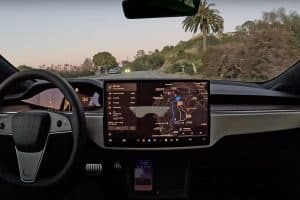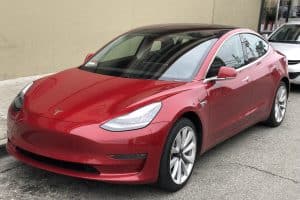- 🚗 Former President Trump plans to end Biden’s EV mandate on his first day in office.
- 🏛 Trump claims ending the mandate will save the U.S. auto industry and reduce costs for consumers.
- 🌿 The EPA has issued new emissions rules, often called Biden’s EV mandate, though there’s no official mandate.
- 📜 Senators Ricketts and Sullivan introduced legislation to block what they call Biden’s EV mandate.
- 🌬 The EPA’s emission standards aim to improve public health by cutting CO2 emissions.
- 🔋 These standards could result in 67% of new light-duty and 46% of medium-duty vehicle sales being electric by 2032.
The electric vehicle (EV) sector stands at a pivotal crossroads, especially in the United States. With a potential policy shift looming on the horizon, everyone from automakers to consumers is keeping a close eye on former President Donald Trump’s ambitious vow to dismantle President Joe Biden’s so-called EV mandate on his first day back in office. But what does this mean for you, the auto industry, and our environment? Let’s dive deep into the implications of this proposed policy change.
The Promise: Ending Biden’s EV Mandate
On a grand stage at the Republican National Convention in Milwaukee, former President Trump made a bold announcement: if he returns to office, he will terminate Biden’s electric vehicle mandate on day one. His statement comes with lofty claims—spearheading the rescue of the U.S. auto industry from “complete obliteration” and saving consumers “thousands and thousands of dollars per car.”
The Reality: No Official Mandate, but Tightened Emission Rules
Interestingly, President Biden’s administration does not have an official “EV mandate” per se. However, the Environmental Protection Agency (EPA) has introduced new emissions rules for light-duty and medium-duty vehicles. These rules, aimed at drastically reducing CO2 emissions, have been interpreted by many as an indirect push towards greater electric vehicle adoption.
- EPA’s Emission Standards:These new standards are aimed at creating healthier communities through cleaner air. They are also expected to significantly reduce cardiovascular and respiratory illnesses by cutting CO2 emissions.
- Projected Impact:
- By 2032, the new standards could lead to 67% of all new light-duty vehicle sales and 46% of medium-duty vehicle sales being electric.
- These projections suggest a substantial shift towards electrification, aligning with global environmental goals but also requiring significant adjustments in the auto industry.
Congressional Pushback: Legislative Moves
Senators Pete Ricketts (R-NE) and Dan Sullivan (R-AK) have been vocal opponents of the EPA’s new rules. They introduced Congressional Review Act legislation aimed at blocking what they refer to as Biden’s EV mandate. Their argument extends beyond economics; they warn against increasing dependency on China for critical minerals needed for EV batteries, which could pose long-term national security risks.
The Arguments: Trump’s Perspective
- Economic Impact:Trump argues that Biden’s EV policy threatens to devastate the U.S. auto industry. By reducing regulatory burdens, Trump believes that automakers can focus on producing vehicles that are both economically viable and consumer-friendly.
- Consumer Costs:According to Trump, the current administration’s policies could inflate vehicle prices due to the high costs associated with EV manufacturing, thus making it harder for average Americans to afford new cars.
The Counterargument: Benefits of Emissions Standards
- Environmental Gains:The EPA’s tightened emissions standards could lead to healthier air quality and subsequently reduce healthcare costs by decreasing the incidence of air pollution-related diseases.
- Long-term Sustainability:By pushing for more electric vehicles, these standards support global efforts to combat climate change, ultimately transitioning the U.S. economy towards more sustainable and renewable energy sources.
What’s Next? The Path Forward
- Policy Outcomes:If Trump does return to office and follows through on his promise, we could see a rollback of EPA’s stringent emissions standards. This move would likely shift the market dynamics back towards traditional internal combustion engines, at least temporarily.
- Industry Response:Automakers, already investing heavily in EV technology, may find themselves at a crossroads—balancing between potential short-term regulatory relief and long-term market trends favoring electrification.
Conclusion: A Delicate Balance
The potential dismantling of Biden’s so-called EV mandate by a future Trump administration brings to light the delicate balance between economic, environmental, and national security considerations. While removing stringent emissions standards may offer immediate economic benefits, the long-term implications for public health and climate change cannot be ignored.
Stay informed and let us know your thoughts on this significant policy debate. How do you see the future of EVs and emissions standards evolving in the U.S.?
Let’s foster a healthy discussion and drive towards a balanced, informed decision that brings together economic viability and environmental sustainability.
Feel free to share your opinions in the comments below or connect with me on social media for more in-depth discussions on this critical issue.





